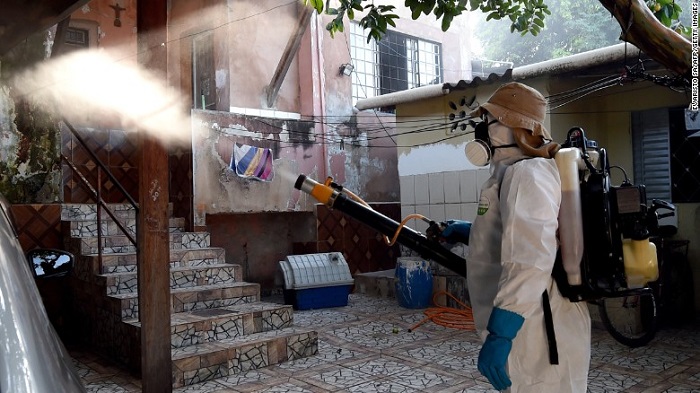First known case of female-to-male Zika transmission announced

The CDC added that they will soon update theirguidance "for sexually active people in which the couple is not pregnant or concerned about pregnancy and for people who want to reduce personal risk of Zika infection through sex."
Detective work cracked the case
The CDC report reads like a detective novel. A non-pregnant woman in her 20s had unprotected vaginal sex with a male partner on the day she returned from travel to a country where Zika is circulating. The next day, she came down with Zika-like symptoms, including fever, rash, fatigue and muscle pain, along with numbness and tingling in her fingers and toes. On day three, she visited her primary care doctor, who took blood and urine samples, and sent them off to the NYC health department. Both tested positive for the virus.
On day seven after intercourse, her male partner, also in his 20s, began to show the same typical signs of Zika, such as fever, rash, joint pain and red eyes, despite the fact that he had not traveled outside the United States for more than a year.
Two days later he visited the same doctor, who became suspicious of the possibility of sexual transmission, and sent the man to the New York City health department to run tests. The urine test was positive for Zika, the blood serum was not.
In subsequent interviews with the health department, the man reported that he only had the one sexual encounter with his partner during that time period, no other recent sexual partners, and no mosquito bites during the week preceding his symptoms.
The conclusion? "The timing and sequence of events support female-to-male Zika virus transmission through condomless vaginal intercourse," the CDC said.
Mounting evidence
While this is the first documented case of female to male sexual transmission, it`s not the first clue that the Zika virus might be hiding in the female genital tract. A case report published this week in The Lancet Infectious Diseases journal tells the story of a 27-year old Guadeloupean woman who came down with Zika in May. Even though Zika was absent from her blood and urine 11 days after she fell ill, her cervical mucus still tested positive for the virus. And recently, a study on rhesus monkeys showed that the virus remained in the vaginal fluid of three non-pregnant females.
Studies have already shown that Zika remains in both urine and saliva long after it resolves in the blood, even though the likelihood of transmission via that route is considered extremely low.
Slow rise of cases?
According to the latest CDC statistics, there are only 14 known cases of sexually transmitted Zika in the United States. To put that into comparison, there have been 1,305 travel-related cases of Zika in the mainland United States and no known cases where Zika has been transmitted via a mosquito bite. But it`s also true that four out of five people who come down with Zika have no symptoms, so experts admit that the numbers could be much higher.
And in Puerto Rico, where Zika is spreading rapidly, officials can`t monitor sexual transmission because "it is not possible to determine whether infection occurred due to mosquito-borne or sexual transmission," the CDC said.









-1745485667.jpg&h=190&w=280&zc=1&q=100)





































